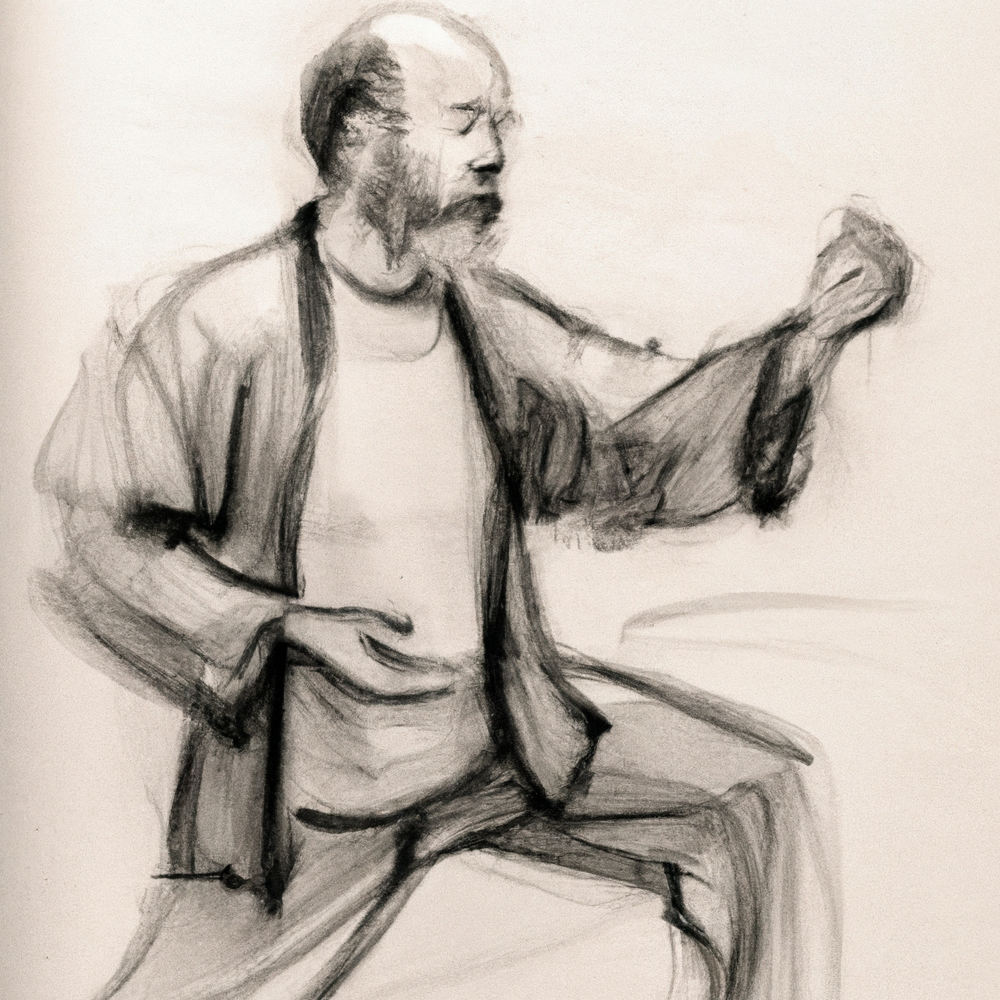Daoism and Taijiquan

Taijiquan may not have begun as an inherently Daoist practice. This might seem a bit strange, as Taiji literally is the name of the symbol which most Westerners know as the yin-yang symbol (more properly known as a Taijitu). And the invention of Taiji is also typically attributed to a figure important in Chinese Daoism. But “taiji” also means something like “Supreme Ultimate” and so Taijiquan as “Supreme Ultimate Boxing ’’ is a pretty impressive sounding name, if nothing else.
It should be noted Daoism as a whole contains other sets of movement-based practices, including Qigong, Daoyin, and Neidan. Some of these practices may very well have informed the inception of Taiji, and it is the fusing of these “internal” practices with martial skills that is considered to be an important milestone in the history of Chinese martial arts.
Indeed, an inventive and inquisitive mind might master the movements of a Qigong series and slowly expand them into something like the Taijiquan form through simple exploration and movement play, especially if they already practiced some other martial art. Taijiquan has also likely always drawn on the concepts of opposition of hard/soft, quick/slow, that are represented by yin and yang. So, while Taiji may have initially borrowed from Daoist ideas, it was not necessarily intended as a practice of Daoism itself, but as a martial art.
However, overtime, the practice of Taiji seems to have become connected more explicitly with Daoism. For many practitioners this connection makes a great deal of sense. However, before going further, it’s probably wise to clearly define what is meant here by “Daoism”. Daoism is a quite large system of beliefs, encompassing a complex theology with a dizzying array of deities, a system of alchemy (inner and outer) focused on the extension of life, and many diverse schools of thought. Here, however, when we refer to Daoism, we are referring to the fundamental philosophical tradition put forward by Laotzi and Zhuangzi, in their respective works composed around 400 BCE, and in turn influenced by the even older I Ching. In this framework, the infinite and boundless is expressed as Wuji. Wuji is the formlessness from which arise form and bounds. Following from Wuji is Taiji, which contains yin and yang in perfect balance. Various combinations of yin and yang produce the five elements, the four seasons, and so on.
These Daoist works are concerned with the Way, and how to live in sync with it. The Way is the thing that animates the world, and all the natural world acts in harmony with The Way. It is the One Thing that is All Things, and may be identified with Wuji or Taiji, depending on the author. It is in constant flux as it moves from one form to another, yet also utterly still, existing as both emptiness and totality. This seeming contradiction is expressed both in very poetic and very crass terms in the writings of Zhuangzi.
We, as thinking beings, can select a course of action that is counter to the Way; however, this rarely works out how we might like, and instead generates unintended consequences. This is because when we act with disregard for the Way we ignore the inherent structure and natural working of the world. In contrast, if one aligns oneself with the Way, then one can act without acting, as one floating down a river travels without themselves having to move, or even generating a ripple. This is the principle of wu wei, effortless action. The Daoist sage exists in a state of wu wei, acting always in accordance with the Way.
This is also the highest expression of Taijiquan as a martial art and as physical and mental practice. To “act without acting” in Taiji is to allow one’s opponent what they think they desire, and help them to experience the unintended consequence of their actions. This is accomplished not through initiating action based on one’s own intentions and desires, but by allowing the opponent to provide the initial shape of events, and then responding to them without becoming entangled in them yourself. In the T’ai Chi Ch’uan Treatise Wang Zongyue writes: “The foundation is giving up the self and following others”. As one’s skill increases, Taiji starts to become more and more like trying to perform Daoism in a martial situation.
In this light, the three pillars of Taijiquan – neutralizing (aka joining), undermining balance, and issuing energy – can be viewed as teaching particular skills needed to find and remain in harmony with the Way in a martial context. This is the foundational skill of Taijiquan. However, over time the awareness and skill taught through these practices can bleed over to produce insight into one’s own psychology and an increased ability to change it. The body and mind are intrinsically linked, and the habits of one will inevitably shape the habits of the other. Thus, the practice of Taiji can be applicable to life more broadly. This is not to say that Taiji is as effective a practice for improving one’s mental health, self-awareness, and well-being as therapy or Tibetan Buddhism or becoming a Sufi Dervish. We are simply saying that Taiji practiced a certain way, for an extended period of time, will tend to generate more internal awareness in several senses.
Solo work (form, standing meditation, qigong) teaches the student to relate to themselves more harmoniously. It does so by providing a tool for generating and sharpening internal awareness; we call this developing embodied skill. It is hard to relax tension one doesn’t know exists, to straighten what isn’t perceived as bent, or to bend what isn’t perceived as bendable. If you don’t know something, then it is rather difficult to influence it or shape it. It is not possible to move in harmony with the Way without first knowing and directing one’s own intentions and desires.
Two-person work teaches the student to relate to others harmoniously (which may include helping them to fall down, or experience other sudden, large forces). This practice requires the student to consider how they respond to the actions of others, and learn how to accommodate those actions and then to redirect them. Over time it reveals that a desire to win, to defeat the other, enables one’s own defeat. It also teaches that we are intimately linked in ways that are difficult to manage or control, and that only by understanding and having an open sensitivity to the other can you properly join with and redirect their intention. This teaches bringing oneself into alignment with the Way as it manifests in others and to stop one’s grasping at control or desired outcomes, in a supportive and friendly environment.
Martial application teaches the student how to apply these things in the world, which is far messier and considerably less agreeable than practice. It is comparatively easy (which is to say: quite difficult) to be relaxed and in tune with what is happening when doing the form in the park. But mastery of the solo and partnered practice does not guarantee that one can apply those skills well in difficult situations. Only practice and experience with a variety of such situations can teach one to do so. Can we use our well developed sensitivities to understand the intentions of others, join with them, and redirect them skillfully? Can we do this when failing to do so has genuine consequences? Can we manage our desires and fears and remain on the Way when the world is tumultuous and unpleasant and a large man is attempting to punch us directly in the face?
